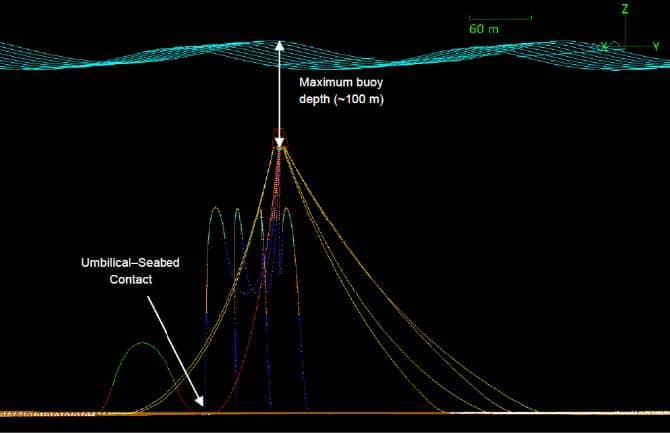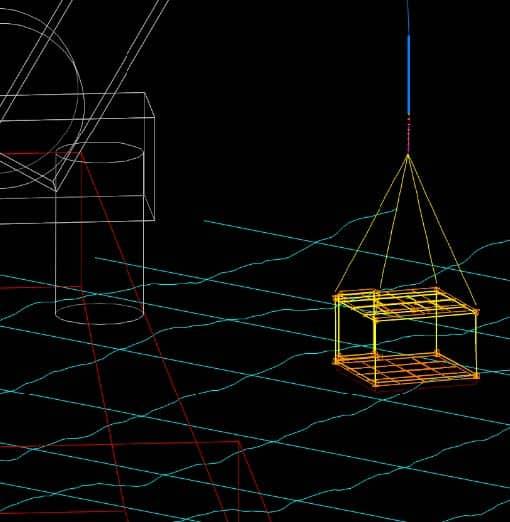On-bottom Stability Design of Pipelines and Umbilicals on Seabed Susceptible to Scour: A Multi-Faceted Approach
Pipelines and umbilicals are essential elements in any offshore hydrocarbon development. Ensuring the on-bottom stability of pipelines and umbilicals during their operational lifetime is an integral part of the design of offshore hydrocarbon developments.
During storm events, pipelines and umbilicals can be subjected to significant hydrodynamic loads. Analysis approaches to assess the on-bottom stability of pipelines have evolved over time to arrive at currently accepted pipeline stability requirements. Early simple approaches relied on determining the minimum pipeline specific gravity that satisfied the force balance between the hydrodynamic loads and the pipeline submerged weight and the soil resistance (typically considered as a Coulomb friction factor). Recent more detailed approaches have been developed using finite element modeling of a three dimensional pipeline, time domain storm loading and dynamic soil resistance modeling (See Youssef and O’Brien Ref. 17 for example). Project costs can be significantly impacted where pipeline or umbilical self-weight is insufficient to ensure the on-bottom stability requirements and secondary stabilization is deemed necessary. However, for seabed material susceptible to scour, there is still more engineering work to be done to achieve more economic pipeline on-bottom stability designs. On-bottom stability recommended practice DNVGL-RP-F109 (Ref. 7) does not take into account the effects of seabed instability on the on-bottom stability of pipelines.
Seabed materials in many regions around the world are known to be mobile. Seabed mobility can occur at hydrodynamic conditions significantly lower than the hydrodynamic conditions that would cause instability of a pipeline or umbilical resting on a flat seabed.
While seabed scour process can have a significant influence on the stability of pipelines and umbilicals, the scour processes are relatively random and time dependant. This complicates the task of predicting the exact evolution of the scour process and accounting for the impact of scour on the stability assessments. Moreover, the extent of scour and pipeline self-burial is dependent not only on the magnitude of the hydrodynamic loading, but also on the duration of exposure and the hydrodynamic loading history. As stated by DNVGL-RP-F114 (Ref. 8) on the effects of seabed scour on the on-bottom stability “This is a complex process, and design methodologies taking these effects into account have not yet been fully developed”.
The on-bottom stability approach presented in this paper is based on an understanding of how seabed scour processes develop in the presence of the pipelines and the resultant impact on the pipeline stability. Numerous field observations and other evidence of pipelines and umbilicals becoming self-buried during their operational lifetime due to seabed scour have consolidated the need to account for scour in the on-bottom stability analysis. This approach accounts for the interaction between seabed scour, pipeline self-burial and on-bottom stability to better predict the pipeline on-bottom stability during design, and to eliminate or reduce the need for any secondary stabilization
The approach has been built up and validated through: 1) offshore field observations and records of pipelines and umbilicals, 2) Physical testing results of pipe models on erodible soil, 3) Theoretical approaches that predict scour and pipeline self-burial mechanisms, 4) Absolute stability analysis methodology of DNVGL-RP-F109 (Ref. 7).
The objective of this paper is to outline a methodology that can be applied to allow seabed scour to be incorporated into on-bottom stability assessments for new pipelines. It should be noted that seabed mobility may also affect other design considerations such as free spanning, pipeline thermal expansion, axial walking, buckling and fatigue analyses. However, these analyses are not part of the scope of this paper.




